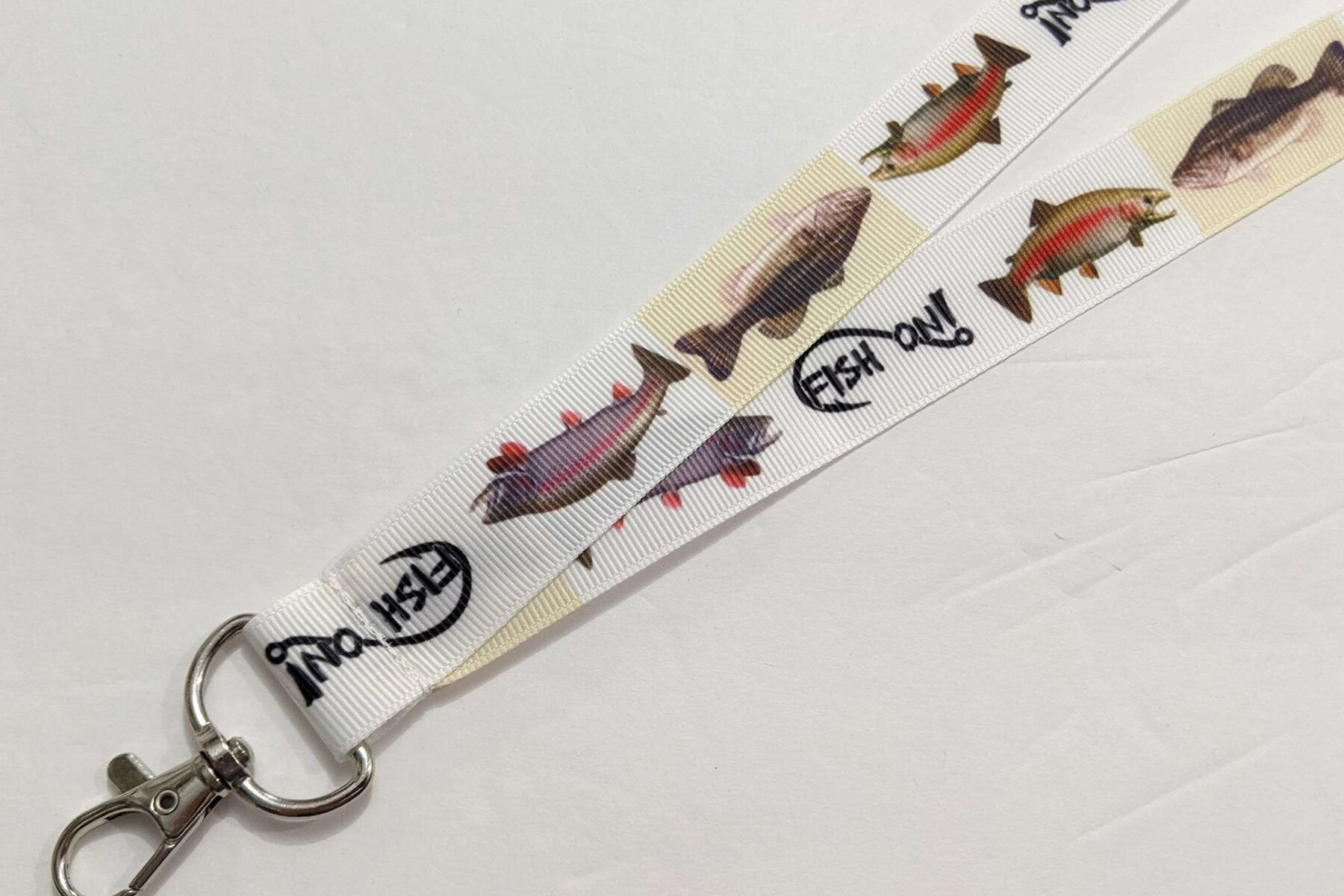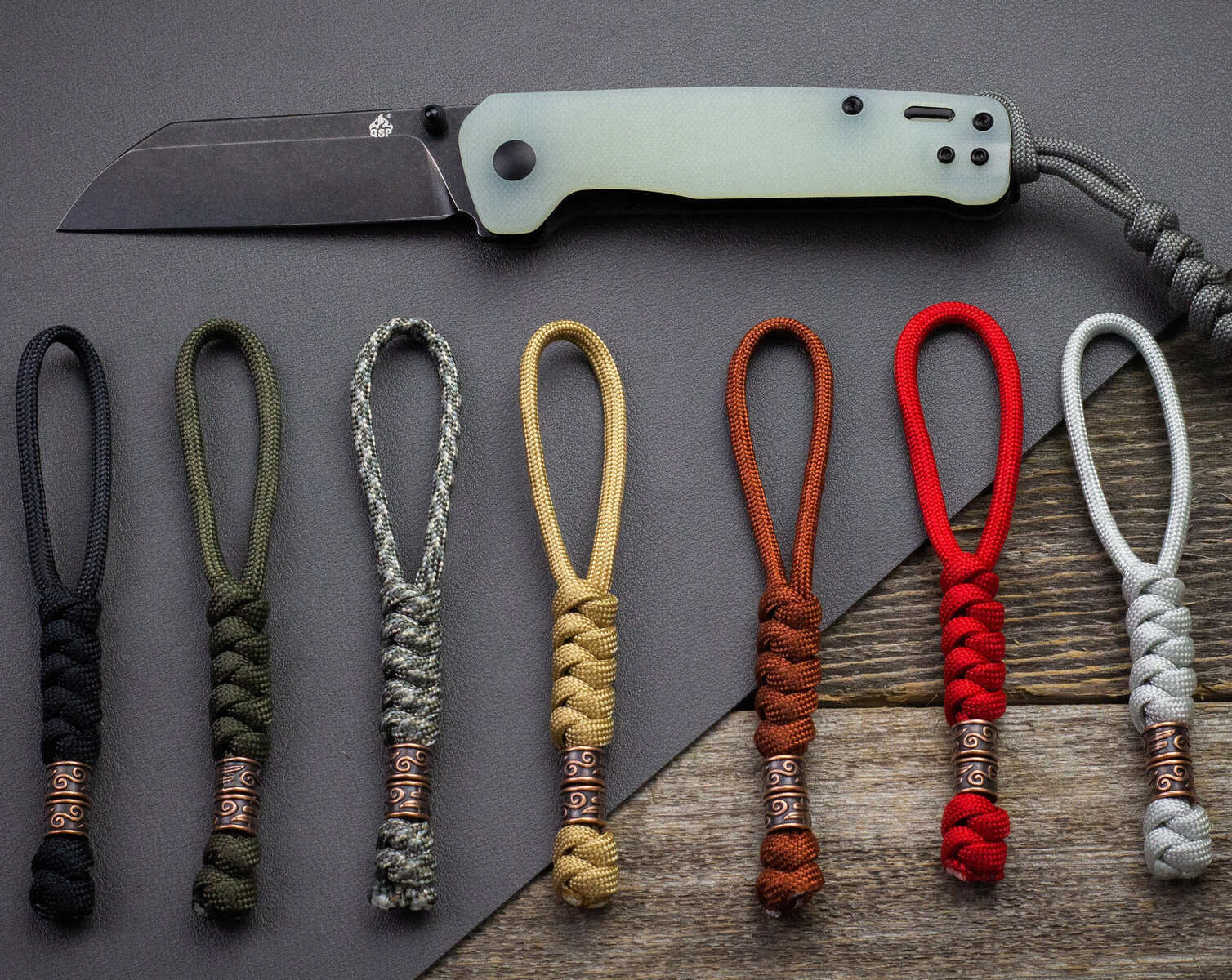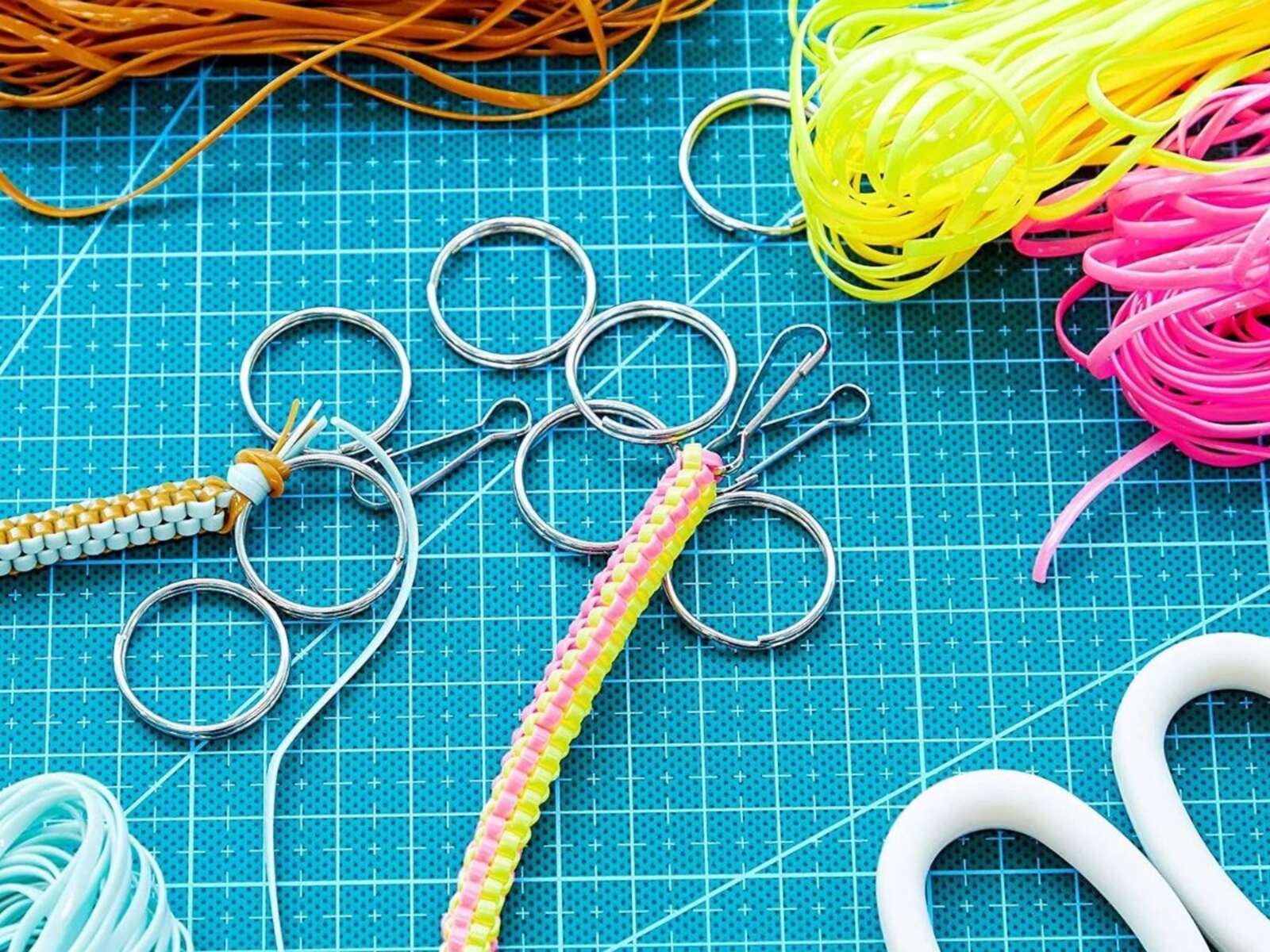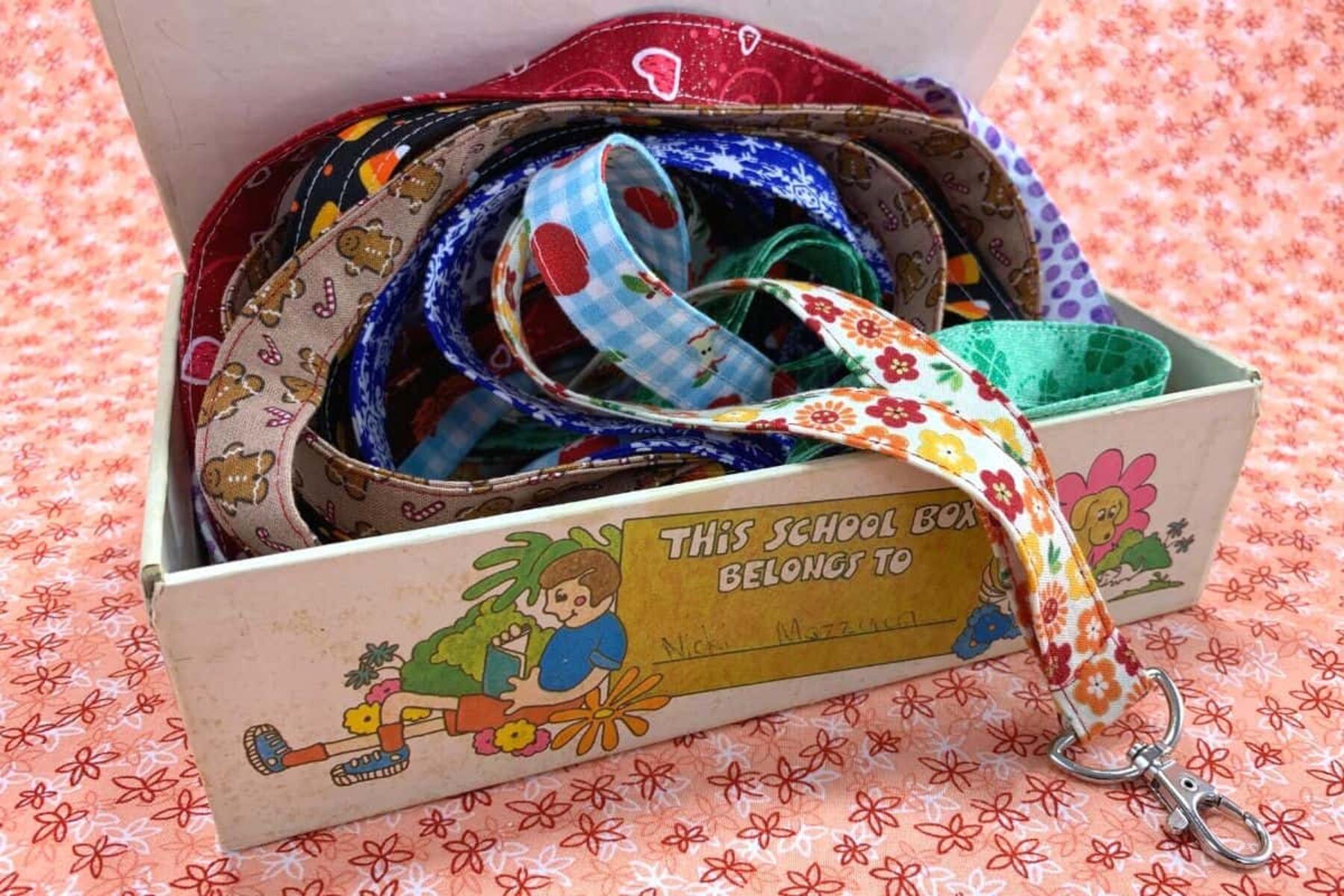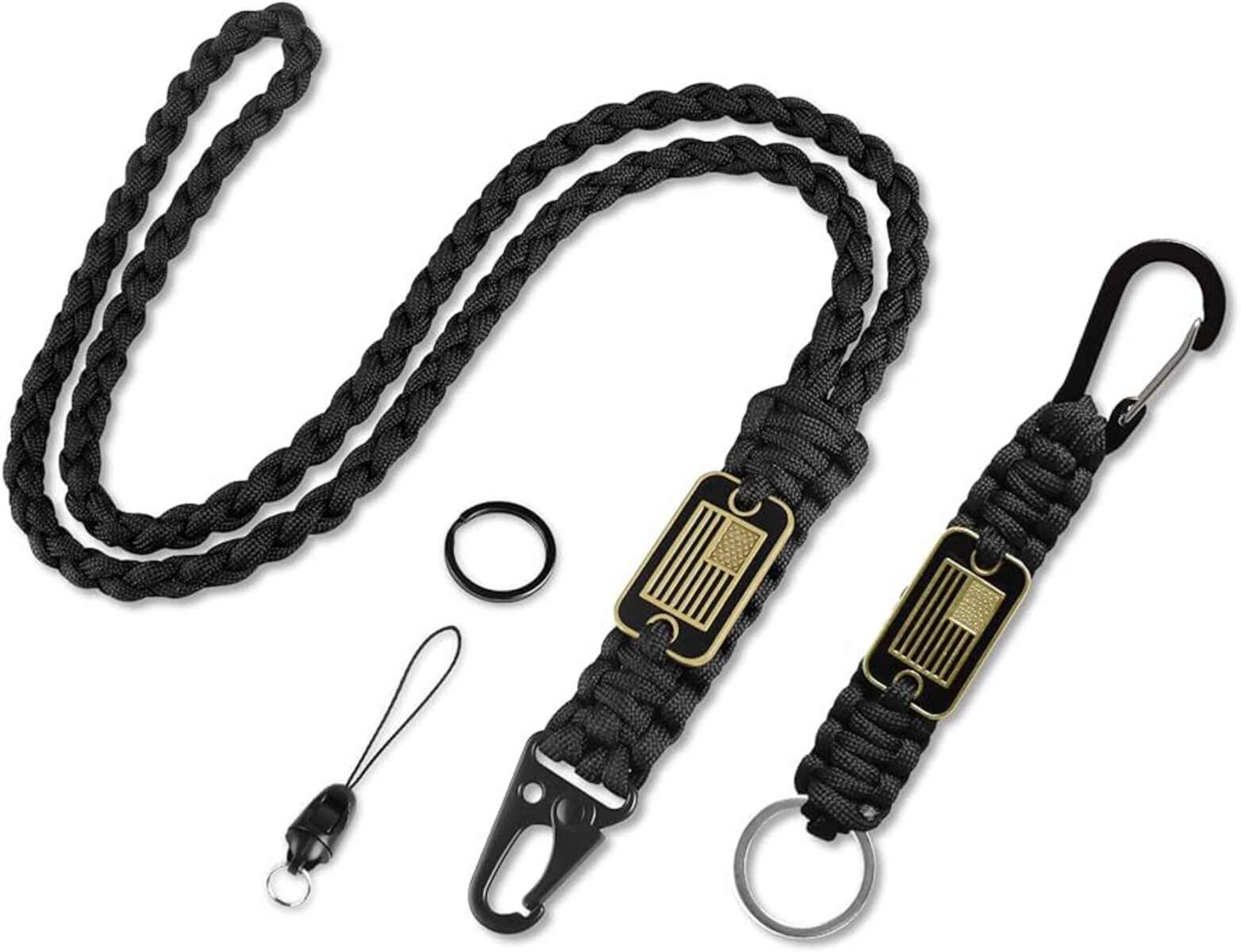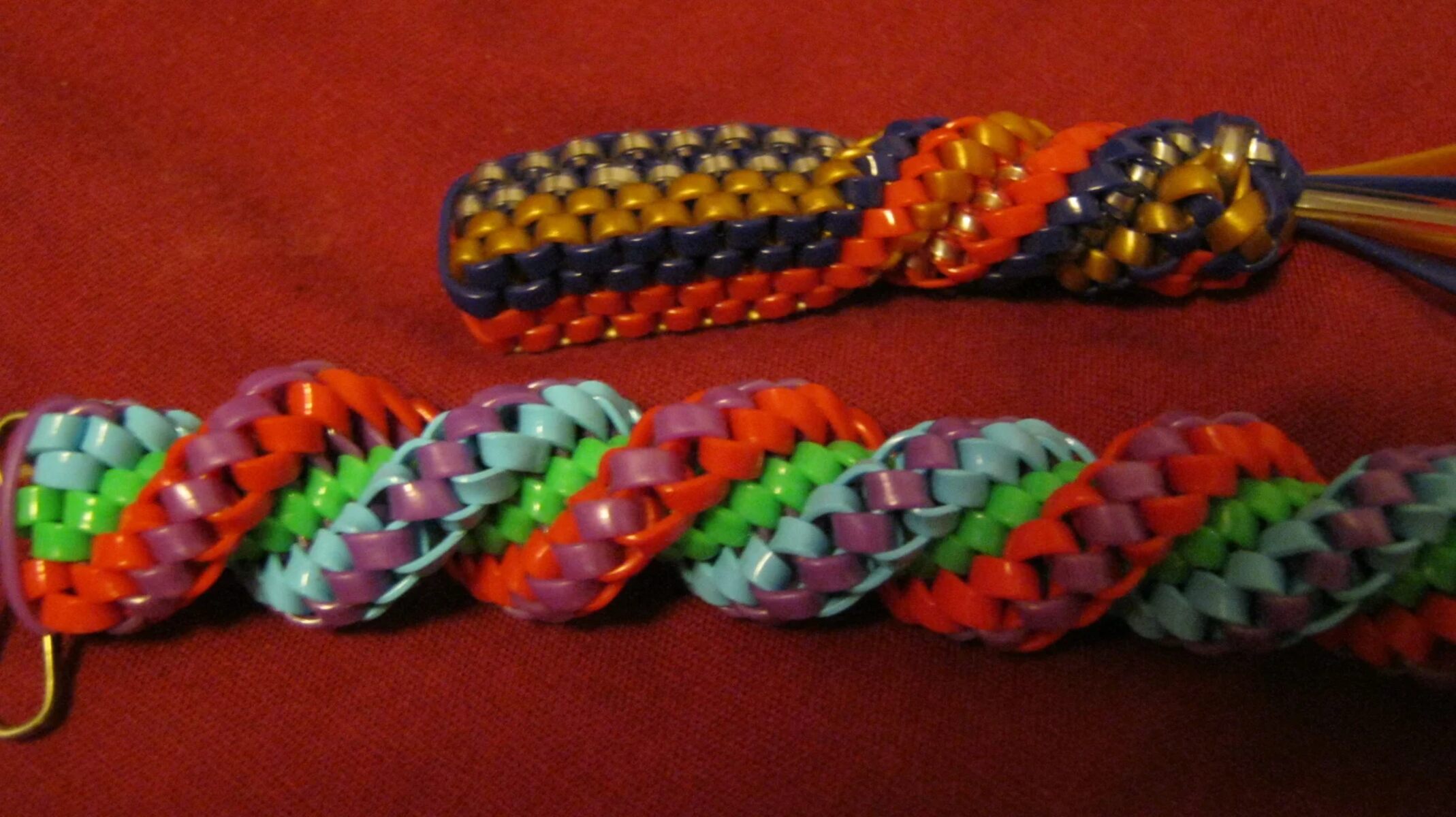Introduction
Lanyards are versatile accessories that serve both functional and aesthetic purposes. From holding identification badges and keys to adding a touch of personal style, lanyards have become an essential part of everyday life. Whether you are a crafting enthusiast looking for a new project or an entrepreneur seeking to create unique merchandise, lanyard making offers a rewarding and creative endeavor.
In this comprehensive guide, we will delve into the art of lanyard crafting, exploring various techniques, designs, and applications. Whether you are a beginner eager to learn the basics or an experienced crafter seeking inspiration for advanced projects, this guide is designed to provide valuable insights and practical tips to elevate your lanyard-making skills.
From unraveling the fundamentals of lanyard making to exploring innovative customization options, this guide aims to equip you with the knowledge and resources needed to embark on a fulfilling lanyard-making journey. Additionally, we will discuss marketing strategies for those interested in turning their passion for lanyard crafting into a successful business venture.
So, whether you are drawn to the creative process of crafting or aspire to turn your hobby into a profitable enterprise, this guide will serve as your comprehensive companion in the world of lanyard making. Let's embark on this exciting journey together, exploring the endless possibilities and creative opportunities that lanyard crafting has to offer.
Chapter 1: Understanding the Basics of Lanyard Making
Lanyard making, also known as lanyard crafting, is a popular and rewarding DIY activity that allows individuals to create personalized accessories for various purposes. At its core, lanyard making involves weaving or braiding colorful threads, cords, or ribbons to construct a strap-like item known as a lanyard. These handmade creations can be used to hold items such as keys, identification badges, whistles, or small tools, offering both functionality and style.
Lanyard Types
Lanyards come in various types, including flat, round, and beaded lanyards. Flat lanyards are commonly used for displaying badges and IDs, while round lanyards offer a more traditional look and feel. Beaded lanyards, on the other hand, incorporate beads into the design, adding a decorative element to the accessory.
Basic Techniques
The most fundamental lanyard-making technique involves the use of a simple weave, often referred to as the box stitch or square stitch. This technique forms the foundation for creating lanyards and serves as a starting point for beginners. As crafters gain proficiency, they can explore more intricate weaving patterns and knotting techniques to enhance the visual appeal and functionality of their lanyards.
Essential Supplies
To embark on a lanyard-making project, crafters will need a few essential supplies, including lanyard lacing or gimp, which serves as the primary material for weaving. Additionally, a pair of scissors for cutting the lacing, a ruler for measuring, and a lanyard hook or clip for securing the finished lanyard are essential tools for this craft.
Safety Considerations
While lanyard making is an enjoyable and creative activity, it is important to observe safety precautions, especially when using sharp tools such as scissors. Crafters, particularly young enthusiasts, should be supervised to ensure safe handling of materials and tools.
Understanding these basics sets the foundation for exploring the world of lanyard making. As we continue our journey, we will delve into the materials and tools needed for lanyard crafting, providing valuable insights for aspiring lanyard makers.
Let's unravel the possibilities and creative potential of lanyard making as we delve deeper into this captivating craft.
Chapter 2: Materials and Tools Needed for Lanyard Crafting
Lanyard crafting requires a selection of materials and tools to bring creative designs to life. Understanding the essential supplies and equipment is crucial for a successful lanyard-making endeavor. Here's a detailed look at the materials and tools needed for lanyard crafting:
Lanyard Lacing or Gimp
Lanyard lacing, also known as gimp, serves as the primary material for weaving lanyards. It is available in a variety of colors, textures, and materials, such as plastic, nylon, or satin. Crafters can choose from a wide range of lacing options to achieve the desired look and functionality for their lanyards.
Scissors
A reliable pair of scissors is indispensable for cutting lanyard lacing to the required length and trimming excess material. Precision and sharpness are essential qualities to ensure clean and accurate cuts during the crafting process.
Ruler
A ruler or measuring tape is essential for accurately measuring the length of lanyard lacing and maintaining consistency across multiple lanyard strands. Precise measurements contribute to the overall quality and uniformity of the finished lanyards.
Lanyard Hooks or Clips
Lanyard hooks or clips provide a secure attachment point for keys, badges, or other items that the lanyard is designed to hold. These attachments come in various styles and sizes, offering versatility in the design and functionality of the finished lanyards.
Optional Embellishments
Crafters can explore additional embellishments such as beads, charms, or decorative accents to enhance the visual appeal of their lanyards. These optional elements allow for creative customization, adding personal flair and uniqueness to the finished lanyard designs.
Work Surface
A dedicated work surface, such as a crafting table or flat workspace, provides a stable and organized area for lanyard crafting. It ensures a comfortable and efficient environment for working with materials and tools, promoting a smooth and enjoyable crafting experience.
Equipped with these essential materials and tools, lanyard crafters are ready to embark on their creative journey, bringing their unique lanyard designs to fruition. As we delve deeper into the step-by-step guide to making basic lanyards, these foundational elements will play a pivotal role in shaping the crafting process and the final lanyard creations.
Chapter 3: Step-by-Step Guide to Making Basic Lanyards
Creating basic lanyards is an excellent starting point for aspiring lanyard crafters. The following step-by-step guide provides a comprehensive overview of the process, from selecting lanyard lacing to mastering fundamental weaving techniques.
-
Selecting Lanyard Lacing: Begin by choosing the lanyard lacing material that best suits the intended use and design of the lanyard. Consider factors such as color, texture, and durability to align with the desired aesthetic and functionality.
-
Measuring and Cutting: Using a ruler or measuring tape, determine the desired length for the lanyard and cut the lacing accordingly. It is essential to account for additional length to accommodate weaving and the attachment of hooks or clips.
-
Preparing the Strands: For a basic lanyard, two strands of lanyard lacing are commonly used. Align the ends of the strands and secure them together, ensuring they are of equal length and ready for weaving.
-
Initiating the Weave: Employ the box stitch or square stitch technique to begin weaving the lanyard strands. This involves crossing the strands over each other in a specific pattern to form a sturdy and visually appealing weave.
-
Continuing the Weave: Repeat the weaving pattern, maintaining consistency and tension throughout the process. As the weave progresses, the lanyard design will take shape, reflecting the chosen colors and patterns of the lacing.
-
Securing the Ends: Once the desired length of the lanyard is achieved, secure the ends of the strands to prevent unraveling. This can be done by tying a knot or using a specialized lanyard finishing technique.
-
Attaching the Hook or Clip: The final step involves attaching a lanyard hook or clip to one end of the finished lanyard. This attachment point serves as the functional component for holding keys, badges, or other items.
By following these step-by-step instructions, crafters can create basic lanyards with ease and confidence. This foundational experience sets the stage for exploring more advanced lanyard techniques and designs, as we will uncover in the subsequent chapters.
Chapter 4: Advanced Lanyard Techniques and Designs
As lanyard crafting skills evolve, crafters can explore a myriad of advanced techniques and intricate designs to elevate their creations. These advanced lanyard techniques offer an opportunity to unleash creativity and produce stunning, personalized lanyards that stand out. Let's delve into the realm of advanced lanyard crafting and discover the techniques and designs that set experienced crafters apart.
Complex Weaving Patterns
Advanced lanyard crafting often involves intricate weaving patterns that go beyond the basic box stitch. Crafters can experiment with techniques such as the spiral stitch, diamond knot, or cobra weave to create visually captivating designs. These complex patterns add depth and texture to the lanyards, showcasing a higher level of craftsmanship and attention to detail.
Incorporating Beads and Charms
Adding beads and charms to lanyard designs introduces an element of sophistication and personalization. Crafters can integrate beads of various sizes, shapes, and colors into the weaving process, creating unique patterns and embellishments. Charms, such as miniature pendants or trinkets, offer an opportunity to infuse individual style and thematic elements into the lanyards, making them truly one-of-a-kind.
Multi-Strand Lanyards
Crafters can expand their repertoire by venturing into multi-strand lanyard designs, where multiple lanyard strands are woven together to form intricate patterns. This advanced technique allows for the incorporation of diverse colors and textures, resulting in visually dynamic and elaborate lanyard creations. Multi-strand lanyards showcase a high level of skill and creativity, making them ideal for crafting statement pieces.
Customized Patterns and Monograms
For a personalized touch, advanced lanyard crafters can explore the art of creating custom patterns and monograms within their designs. This may involve weaving initials, names, or intricate motifs into the lanyard, showcasing a high level of precision and artistry. Customized patterns and monograms add a distinctive flair to the lanyards, making them meaningful gifts or signature accessories.
Intricate Knotwork
Incorporating intricate knotwork, such as Celtic knots or decorative macramé patterns, into lanyard designs elevates the craftsmanship to a new level. These complex knotting techniques add a sense of elegance and artistry to the lanyards, demonstrating the mastery of advanced lanyard crafting skills. Crafters can explore various knotwork styles to create visually stunning and unique lanyard designs.
By mastering these advanced lanyard techniques and designs, crafters can unlock a world of creative possibilities, producing lanyards that are not only functional but also exquisite works of art. As we continue to explore the realm of lanyard making, these advanced techniques will inspire crafters to push the boundaries of their creativity and craftsmanship.
Chapter 5: Creating Customized Lanyards for Different Purposes
Customized lanyards offer a versatile and personalized accessory solution for a wide range of purposes, catering to both practical needs and aesthetic preferences. Whether it's for corporate branding, event promotions, or individual expression, the ability to tailor lanyards to specific purposes adds a layer of functionality and visual appeal. Let's explore the diverse applications of customized lanyards and the creative opportunities they present.
Corporate Branding and Identification
In the corporate environment, lanyards serve as prominent tools for displaying employee identification badges, access cards, and keys. Customized lanyards bearing the company logo, colors, or slogans not only reinforce brand identity but also contribute to a professional and cohesive organizational image. By incorporating corporate branding elements into lanyard designs, businesses can effectively communicate their visual identity while providing employees with a practical and stylish accessory for everyday use.
Event and Promotional Giveaways
Events such as conferences, trade shows, and festivals often utilize customized lanyards as promotional giveaways or commemorative souvenirs. Event organizers can capitalize on the customization potential to feature event themes, sponsor logos, or commemorative messaging on lanyards. This not only enhances the event's branding but also provides attendees with a tangible keepsake that doubles as a functional memento.
Personal Expression and Fashion
For individuals, customized lanyards offer a means of personal expression and fashion. Whether it's showcasing a favorite sports team, expressing support for a cause, or displaying unique patterns and designs, personalized lanyards become an extension of individual identity. Crafters can tap into this market by offering customized lanyards that cater to diverse interests, allowing individuals to express their personality and affiliations through visually engaging accessories.
Security and Access Control
Customized lanyards play a crucial role in security and access control measures. By incorporating specific color-coding, text identifiers, or visual cues, lanyards can signify different levels of access or clearance within secure environments. This customization not only facilitates efficient identification but also contributes to organizational security protocols, ensuring that authorized personnel are easily recognizable based on their lanyard credentials.
Educational and Institutional Use
In educational institutions and public facilities, customized lanyards can be utilized for various purposes, including student identification, staff recognition, and visitor management. By customizing lanyards with school colors, logos, or designated roles, institutions can streamline identification processes and foster a sense of community and belonging among students and staff.
Customized lanyards offer a versatile and impactful means of communication, identification, and personal expression across diverse settings. Crafting unique and purpose-specific lanyards opens doors to a wide array of opportunities, allowing crafters to cater to specific needs and preferences while showcasing their creativity and attention to detail.
Chapter 6: Tips for Selling and Marketing Your Handmade Lanyards
-
Identify Your Target Market: Understanding the demographic and preferences of your potential customers is crucial. Consider the age group, interests, and specific needs of your target market to tailor your lanyard designs and marketing strategies accordingly.
-
Create a Strong Online Presence: Leverage social media platforms, online marketplaces, and your own website to showcase your handmade lanyards. High-quality images, engaging content, and customer testimonials can help build credibility and attract potential buyers.
-
Emphasize Customization Options: Highlight the customizable nature of your lanyards, allowing customers to request personalized designs, colors, or embellishments. Offering custom options can set your handmade lanyards apart from mass-produced alternatives.
-
Participate in Craft Fairs and Markets: Engage with local communities by participating in craft fairs, markets, and artisanal events. These venues provide opportunities to interact with customers directly, receive feedback, and make personal connections that can foster customer loyalty.
-
Collaborate with Local Businesses: Explore partnerships with local retailers, gift shops, or boutiques to feature your handmade lanyards in their establishments. Consignment agreements or wholesale arrangements can expand your reach and introduce your products to new audiences.
-
Utilize Search Engine Optimization (SEO): Optimize your online product listings and website content with relevant keywords, descriptions, and tags to improve visibility in search engine results. This can increase the likelihood of potential customers discovering your handmade lanyards online.
-
Offer Bundled or Customized Sets: Create bundled sets of lanyards or offer customization packages that cater to specific themes or occasions. This can appeal to customers seeking coordinated lanyard options for events, group activities, or gifting purposes.
-
Encourage Customer Reviews and Referrals: Positive reviews and word-of-mouth recommendations can significantly impact your sales. Encourage satisfied customers to leave reviews and share their experiences, fostering trust and credibility among potential buyers.
-
Provide Excellent Customer Service: Delivering exceptional customer service, including prompt responses to inquiries, efficient order processing, and reliable shipping, can contribute to positive customer experiences and encourage repeat business.
-
Utilize Storytelling in Marketing: Share the inspiration behind your lanyard designs, the craftsmanship involved, and the personal touch that goes into each handmade piece. Storytelling can create emotional connections with customers and elevate the perceived value of your products.
By implementing these tips for selling and marketing your handmade lanyards, you can effectively promote your craft, reach a wider audience, and establish a successful venture in the lanyard-making industry.
Conclusion
In conclusion, the art of lanyard making offers a captivating blend of creativity, practicality, and entrepreneurial potential. Throughout this comprehensive guide, we have explored the fundamental aspects of lanyard crafting, from understanding the basics to delving into advanced techniques and customization options. As we wrap up this journey, it is evident that lanyard making transcends mere craftsmanship, evolving into a multifaceted endeavor with diverse applications and opportunities.
Lanyard making serves as a gateway to self-expression, allowing individuals to infuse their unique style, preferences, and personal narratives into tangible accessories. From basic weaving techniques to intricate designs, lanyard crafting empowers enthusiasts to channel their creativity and produce functional yet visually captivating lanyards that resonate with their intended audience.
Moreover, the customization potential of lanyards extends beyond individual expression, encompassing corporate branding, promotional initiatives, security protocols, and institutional identification. The versatility of customized lanyards positions them as indispensable tools in various settings, ranging from corporate environments to educational institutions and public events.
For aspiring lanyard crafters, this guide has provided valuable insights into not only the creative aspects of lanyard making but also the strategies for marketing and selling handmade lanyards. By leveraging online platforms, engaging with local communities, and emphasizing customization options, crafters can effectively showcase their unique creations and build a loyal customer base.
Ultimately, lanyard making represents a fusion of artistry and functionality, offering a fulfilling avenue for both personal expression and entrepreneurial pursuits. Whether it's the joy of crafting intricate designs, the satisfaction of meeting customer needs, or the thrill of building a successful business, lanyard making holds the promise of a rewarding and enriching journey for enthusiasts and entrepreneurs alike.
As we conclude this guide, let's embrace the boundless potential of lanyard making, celebrating the artistry, innovation, and meaningful connections that it fosters. Whether you are a passionate crafter seeking new creative endeavors or an aspiring entrepreneur venturing into the world of handmade merchandise, may this guide serve as a source of inspiration and guidance in your lanyard-making endeavors.







